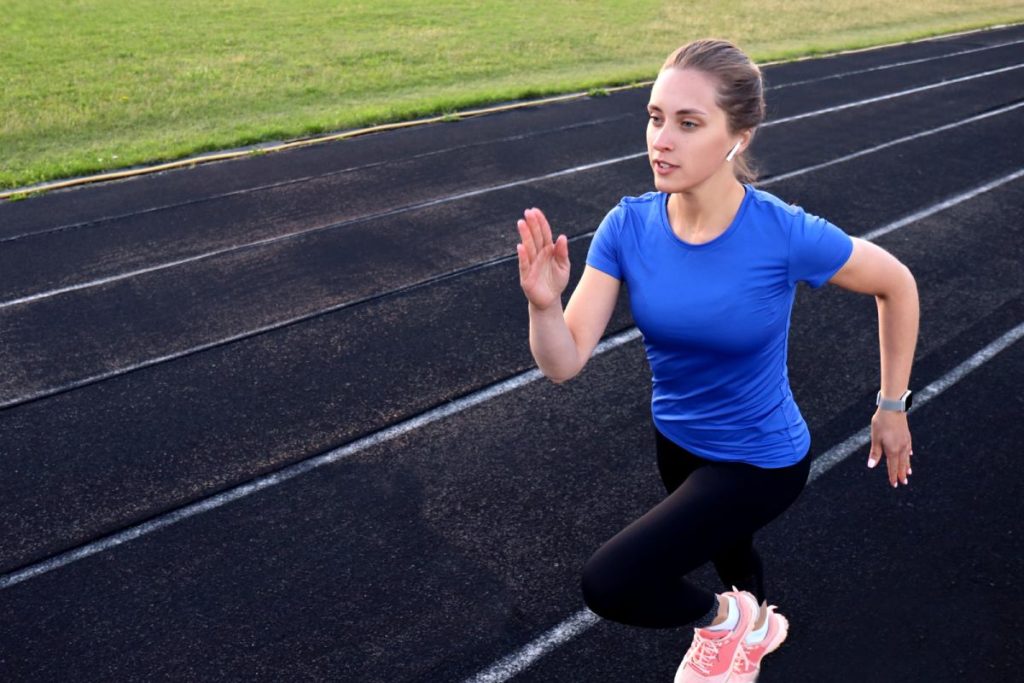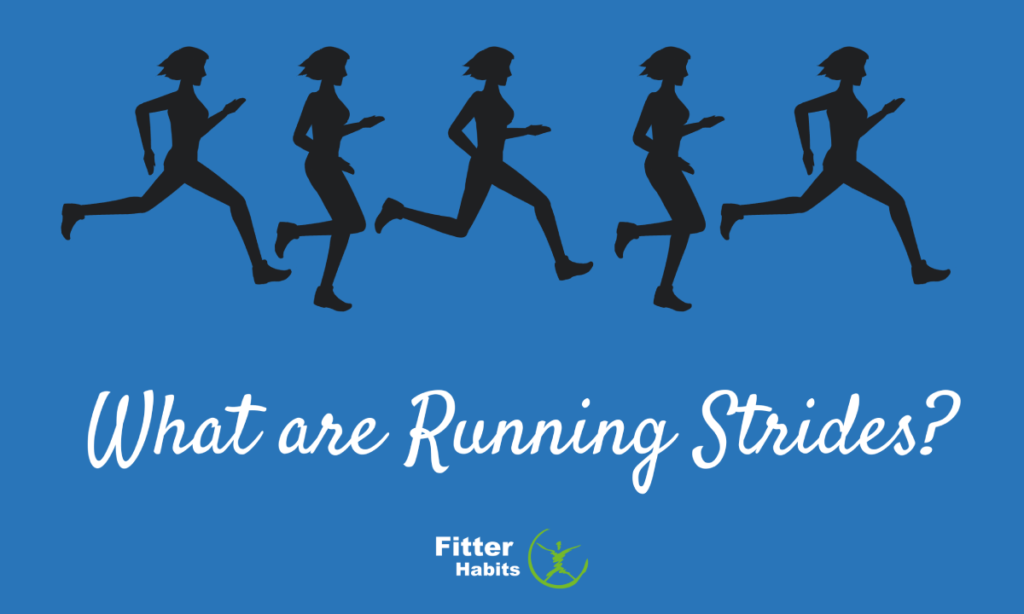If you are training for a marathon or you simply want to improve your personal running time for yourself, then you will want to learn about strides in running.
Strides are that little extra oomph, that extra sprint that enables runners to go just a bit faster, just a bit further. Runners that practice their strides are equipped to give that extra push in order to get over the finish line and succeed in reaching their own ultimate time goals.
Just about anyone who has competitively won, whether in high school or as part of a professional running team, has likely heard of strides as they are a very fundamental building block of a runner’s overall speed and coordination.
However, if you are new to the running world or have otherwise not done competitive running in a formal environment, then you may have missed out on learning this crucial skill. Well, we’re here to remedy that!
The following concise article will go over the basics of what to know about strides in running and how you can get started running strides today in the following order:
Contents
The Basics: What Are Strides in Running

A stride is a segment of running that takes place over 60 to 100 meters but in the speed near the race pace, the runner would race 800 to 1500 meter segment. Runners should have the goal of running one stride between 20 and 30 seconds. In other words, a stride length is a segment that is run very fast, very quickly.
That said, it is important to note that while strides should be run quickly, it is not just about running at the fastest race pace possible. Great running strides are about running well; running in a controlled manner with good running form. Most professional coaches will recommend that a stride should be run at two-thirds of the runner’s very top speed.
Although coaches and individuals may differ on that, with some professional runners running a sprint at 80 to 85% effort. The primary point here is that you are accelerating at a very fast race pace over a short distance. For this reason, strides are also often called accelerations.
The Benefits of Learning How to Run Strides
- A great exercise to focus on mechanics. Running a dozen strides or so is fantastic for pacing your overall running mechanics. That’s because these are fast, short bursts of easy running in which you can create key mental cues that allow you to focus on your body and proper running form and not just on speed or distance.
- Injects speed training in an overall workout plan. A lot of marathon running and training for distance running focuses on building up one’s aerobic system. And that’s important! However, too often speed workouts get put on the back burner. Strides can help as these exercises offer an easy, fast, and fun way to inject a speed workout and speed training into your overall running workout plan and to do so in a manner that will build up a critical skill that can help you win races.
- Good leg stretching exercises. Because strides are about really covering the maximum distance with a short burst of energy, a big part of the running form for it is about stretching out your legs to their maximum potential. This offers some great stretches to prepare your body and, as part of an overall running workout or training plan, can leave you feeling better and more energized.
How to Get Started Running Strides & Learning Running Form
- First, complete an easy run at an easy pace. When learning strides, you should always do so after you have completed a run and gotten your body warmed up.
- Stretch for five minutes. Strides must be done very quickly and so it is important to do a second stretch after your warm-up run. Focus on stretching out any muscles that felt tight during your warm-up run.
- Measure out 100 meters. Use chalk to create a starting and stopping point and, if possible, have someone on hand to time (and ideally film) you. If not, use a stopwatch to track your time. Check the settings to see if you can set alarms at the times indicated in the following steps.
- Ease into a five-second acceleration. Jog up to your starting mark and then ease into your fast pace or easy run within five seconds. Do not explode over that starting line. Do plan to run fast. Remember, while sprints are largely about the fast, accelerated pace, good form is also very important. Don’t just run faster.
- Continue at top acceleration speed for 30 seconds. Stay relaxed as you push and increase your body to its full sprint speed. Focus on what you feel is running form, each foot landing should happen at your midfoot, the balls of your feet, and not the heel. Remember, 20 30 seconds here.
- Slow over five seconds. Sprints end with a deceleration that mirrors the acceleration. Slow down gradually over five seconds, ending over the finish line in a stop.
- If doing multiple strides, give yourself 5 minutes for recovery. If you are training multiple strides, make sure you complete a long, full recovery between each of your strides. This long recovery is important because, again, strides are just as much about form as speed, and you cannot focus on the form if you cannot catch your breath. After your first day of workout, you’ll find that this is an easy workout to get used to.
Final Word on What are Strides in Running & Running Form
Strides are a great running exercise that every runner should complete. This training plan or exercise helps you perfect your running form, and it helps train your body to give you bursts of energy — which can be just what you need to win that upcoming race. Just remember, first stretch then start your strides on your next day’s workout.
FAQs on What Are Strides in Running
Do I need a coach to run strides?
No! Follow the aforementioned steps, and you can start running easy strides today.
When is the best time to run strides?
Use strides as a warmup before a long run workout or race and as a cool-down exercise following easy runs. Anytime during the day is good.
Can I start running strides on a treadmill?
Absolutely! Simply use your controls to coordinate a timed acceleration and deceleration at the end of easy runs.
Can I run barefoot?
Some people run strides barefoot, without shoes, but unless you’re experienced, we don’t recommend barefoot. Good shoes mean good support, but check the comments for any barefoot recommendations.



